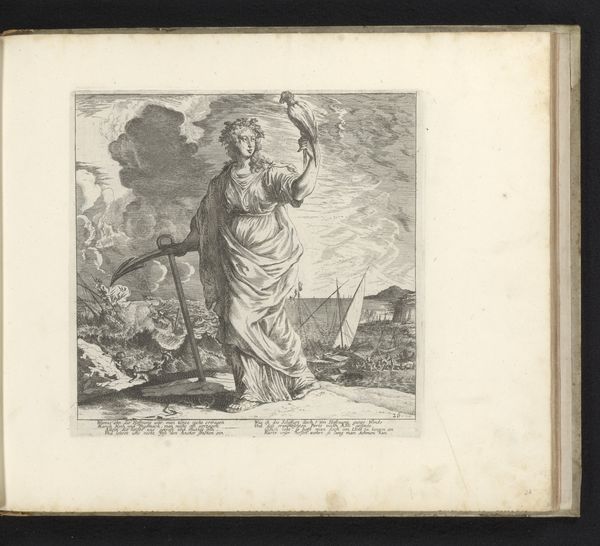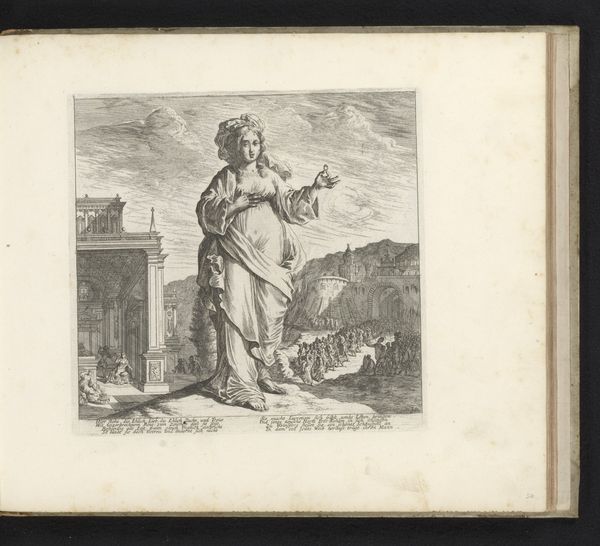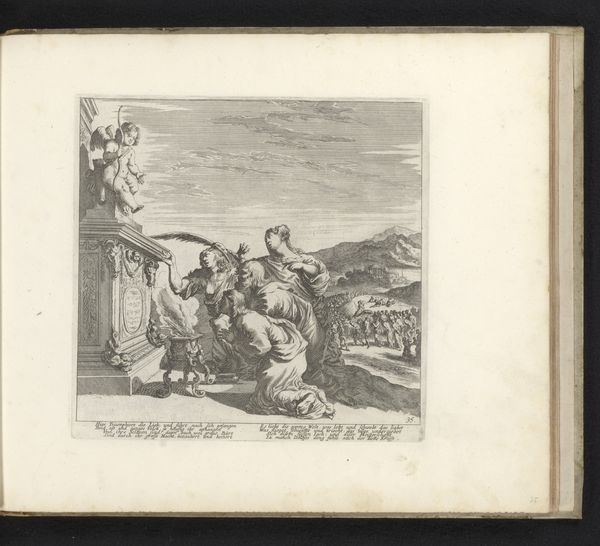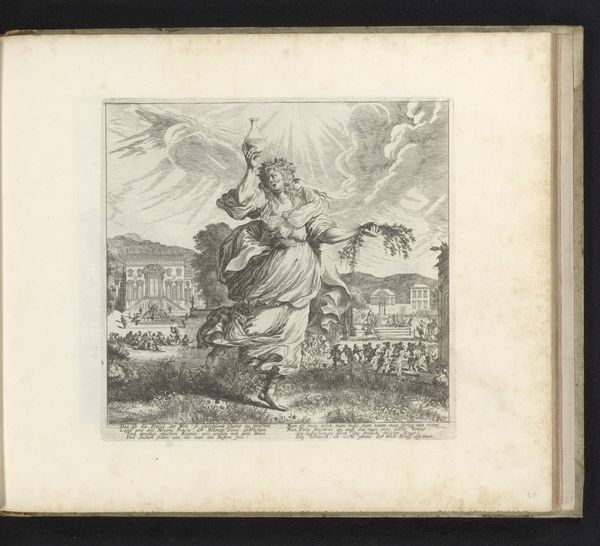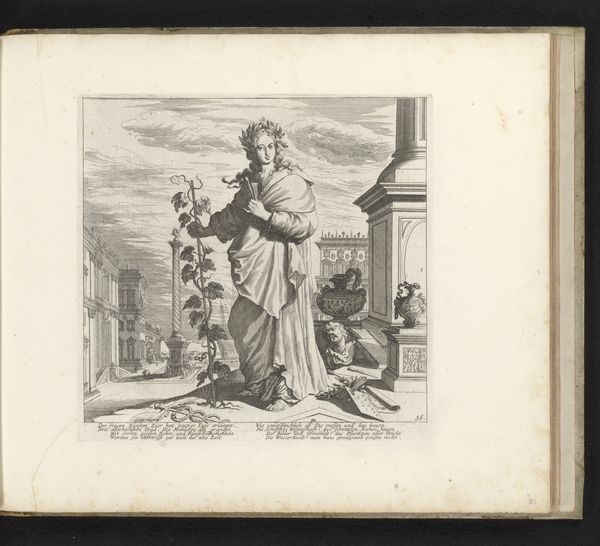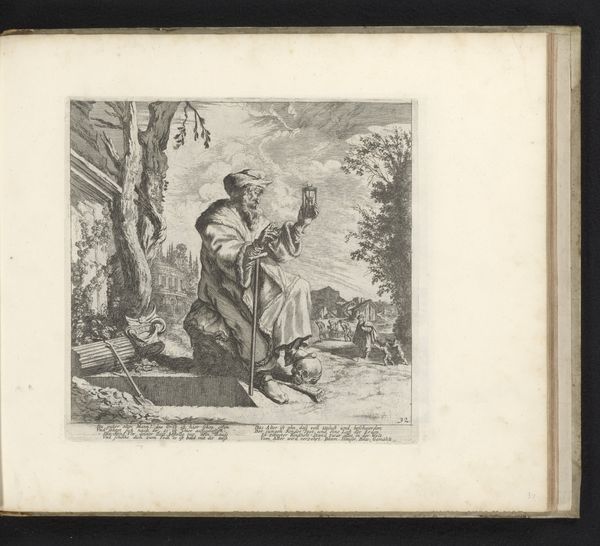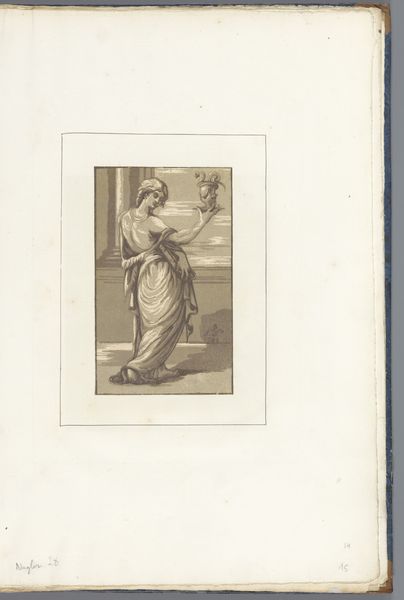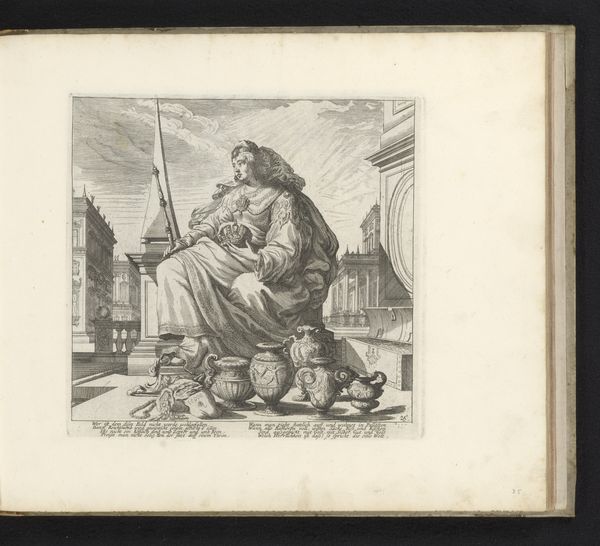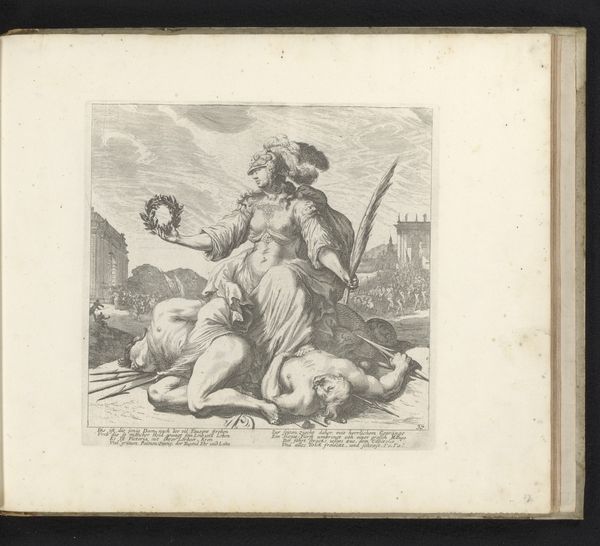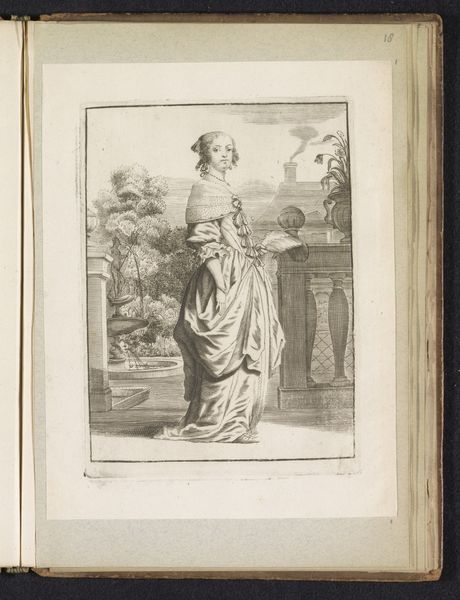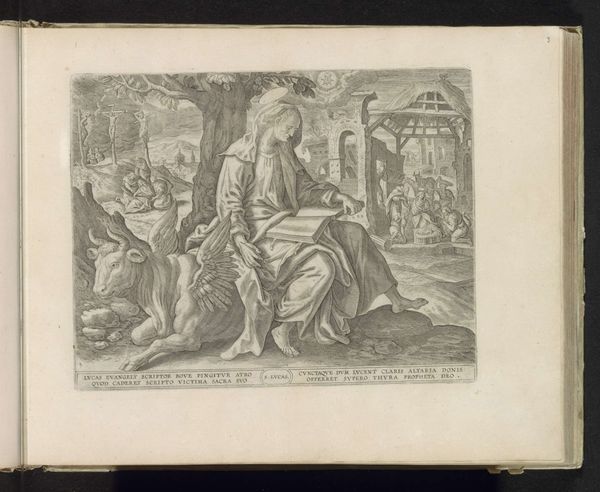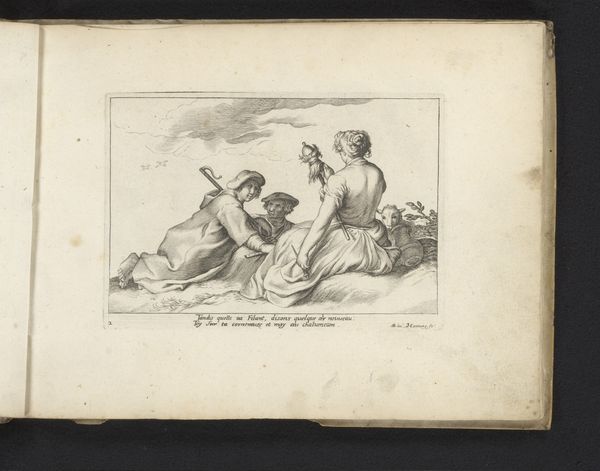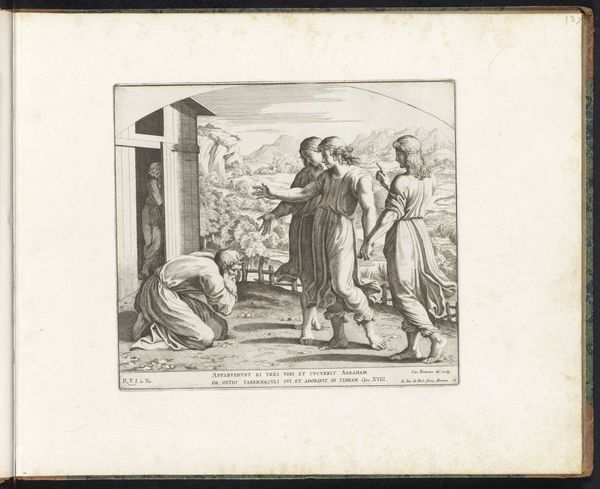
engraving
#
allegory
#
baroque
#
figuration
#
line
#
history-painting
#
engraving
Dimensions: height 217 mm, width 223 mm
Copyright: Rijks Museum: Open Domain
Curator: "Personification of Concord and Strength", made between 1670 and 1682 by Melchior Küsel. This engraving at the Rijksmuseum depicts a striking allegorical figure. I’m really struck by the details in the line work, how it creates so much texture despite the monochromatic medium. What can you tell me about this piece? Editor: Well, looking at this print, I’m immediately drawn to how it seems to highlight the tension between peace and power. I am intrigued to hear what insights you have. Curator: Let’s consider the materiality. This is an engraving, a process deeply rooted in labor. The act of meticulously carving into the metal plate itself mirrors the societal labor needed for both ‘concord’ and ‘strength’, wouldn’t you agree? Notice the clear delineation of form and the contrasts of dark and light. These contribute to its bold statement, echoing the prevailing social structures of its time. How might this artistic decision affect its accessibility and consumption? Editor: That's fascinating, I never thought about the labor involved in making an engraving! Perhaps the intricacy adds to the work's value, influencing who could possess or view it. Would a print like this, produced through laborious processes, be aimed at a particular class of consumer? Curator: Exactly. Engravings facilitated wider dissemination compared to unique paintings. By understanding the economic forces, we reveal that images could promote ideologies or power structures through printmaking technology itself. Also, think about how images become commodities—did this impact the artist or their subject? Editor: So the image production and consumption cycles become intrinsic to its overall meaning and effect? This has given me a new perspective, highlighting production rather than symbolism. Curator: Indeed. Thinking about art through its production reveals as much, if not more, than traditional art historical approaches focused solely on iconography. Consider how this might shift your analysis of other works we'll encounter. Editor: This really broadened my view, allowing a look into societal impacts. Thanks so much!
Comments
No comments
Be the first to comment and join the conversation on the ultimate creative platform.
